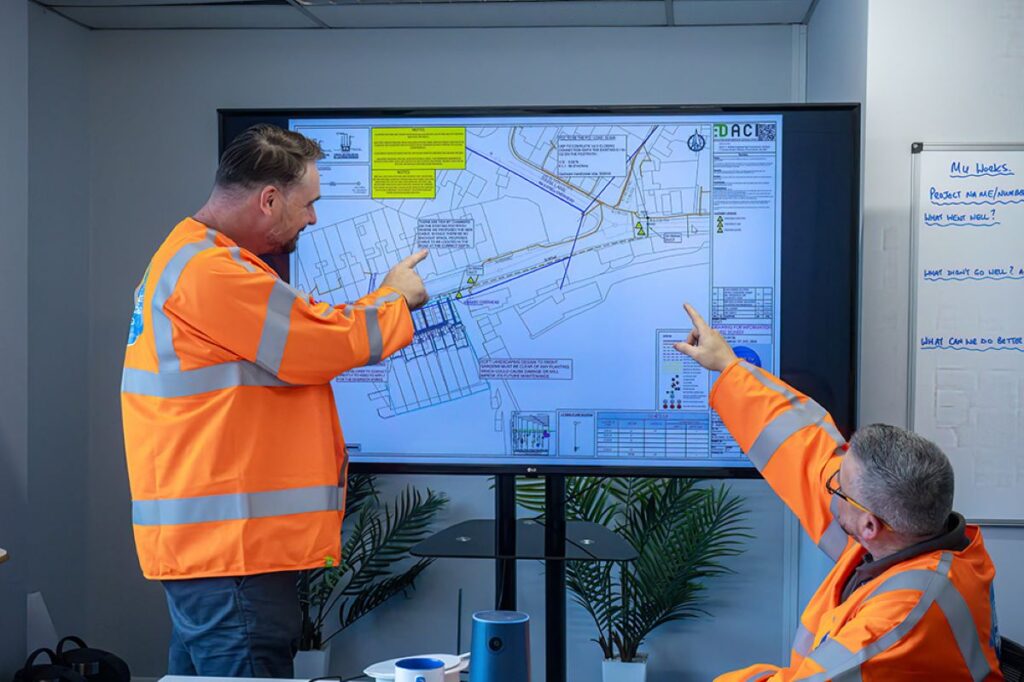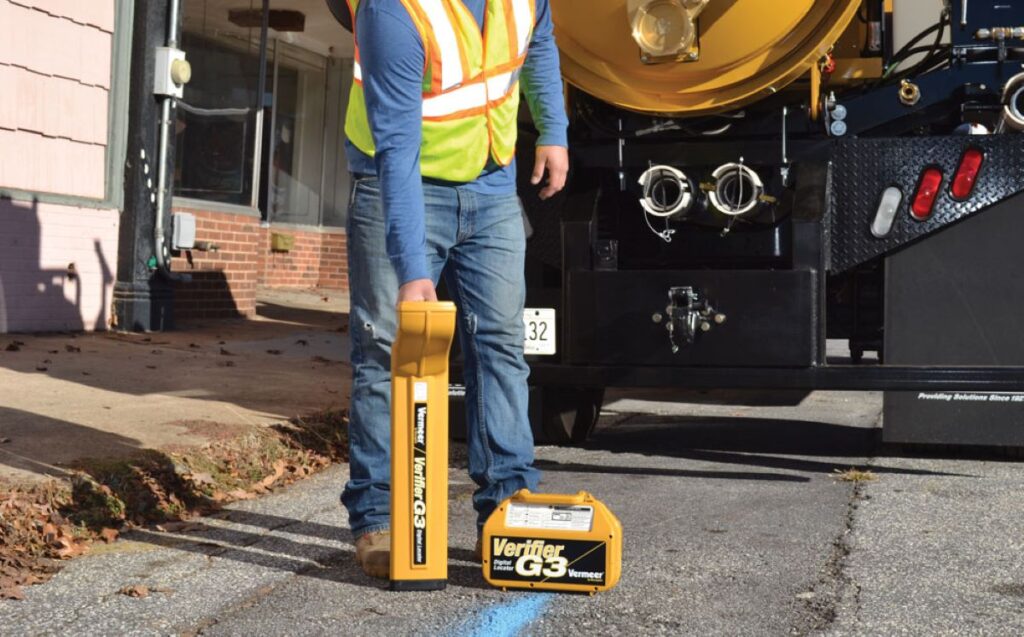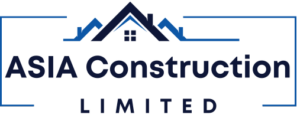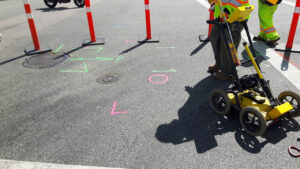How Utility Locating Services Prevent Costly Damage to Infrastructure
In an age where urban development is rapidly expanding, the importance of utility locating services cannot be overstated. These services play a crucial role in ensuring that infrastructure projects are completed safely and efficiently, protecting both public and private investments. By accurately identifying the location of underground utilities, these services help to prevent costly damage, delays, and even potential hazards. This article delves into the significance of utility locating services and how they contribute to safeguarding infrastructure.
The Importance of Utility Locating Services
Utility locating services are essential for a variety of reasons. They provide critical information that helps contractors, engineers, and developers make informed decisions during construction and maintenance projects. Without accurate utility mapping, the risk of accidental damage to existing infrastructure increases significantly.
Preventing Accidental Damage
Accidental damage to underground utilities can lead to severe consequences, including service disruptions, financial losses, and even legal liabilities. For instance, striking a gas line can result in explosions, while damaging water pipes can cause flooding. Utility locating services employ advanced technologies such as ground-penetrating radar and electromagnetic locating to accurately identify the position of utilities, minimising the risk of such incidents.
Moreover, these services are not just about avoiding immediate damage. They also play a fundamental role in preserving the integrity of existing infrastructure. By ensuring that construction activities do not interfere with vital utilities, utility locating services help maintain the functionality of essential services such as electricity, water, and telecommunications. This is particularly crucial in densely populated areas where the disruption of services can have widespread effects, impacting not just individual properties but entire communities.
Enhancing Project Efficiency
In addition to preventing damage, utility locating services enhance project efficiency. When contractors have access to accurate utility maps, they can plan their work more effectively, reducing the likelihood of delays. This is particularly important in urban areas where multiple utilities may be located in close proximity to one another.
Furthermore, having a clear understanding of the underground landscape allows for better resource allocation. Contractors can optimise their equipment and manpower, ensuring that projects are completed on time and within budget. This efficiency not only benefits the contractors but also the clients who rely on timely project completion. Additionally, a well-executed utility locating service can lead to cost savings in the long run, as it helps avoid the expensive repercussions of utility strikes, including repair costs and potential fines. The ability to foresee and mitigate risks associated with underground utilities ultimately contributes to a smoother workflow and a more successful project outcome.
Moreover, the integration of utility locating services into the planning phase of a project fosters collaboration among various stakeholders. By engaging utility locating professionals early in the process, architects, engineers, and contractors can work together to devise innovative solutions that accommodate existing utilities while achieving the project’s goals. This collaborative approach not only enhances the overall quality of the construction but also promotes a culture of safety and responsibility within the industry, ensuring that all parties are aware of the potential challenges posed by underground utilities.
Technological Advancements in Utility Locating
The field of utility locating has evolved significantly over the years, thanks to advancements in technology. Modern utility locating services utilise a combination of traditional and innovative techniques to provide the most accurate results possible.
Ground Penetrating Radar (GPR)
Ground Penetrating Radar (GPR) is one of the most effective tools used in utility locating. It employs radar pulses to image the subsurface, allowing operators to detect the presence of utilities without the need for excavation. This non-invasive method is particularly advantageous in urban settings where digging can cause significant disruptions.
GPR is capable of identifying various types of utilities, including metallic and non-metallic pipes, cables, and even voids in the ground. The data collected can be processed and visualised in real-time, providing immediate insights that aid decision-making during construction projects. Furthermore, the versatility of GPR allows it to be used in a variety of environments, from densely populated city centres to remote rural areas, making it an invaluable tool for utility companies and construction firms alike.
As technology continues to advance, the capabilities of GPR are also improving. Recent developments have led to enhanced resolution and depth penetration, allowing for more detailed imaging of subsurface structures. This means that operators can not only locate utilities more effectively but can also assess their condition, which is crucial for maintenance and safety planning.
Electromagnetic Locating
Electromagnetic locating is another widely used technique in utility locating services. This method involves transmitting a signal through the utility line, which can then be detected by a receiver. It is particularly effective for locating metallic utilities, such as water and gas pipes.
Electromagnetic locating is often used in conjunction with GPR to provide a comprehensive view of underground utilities. By combining these technologies, utility locating services can deliver highly accurate and reliable data, reducing the risk of damage during excavation. Additionally, the integration of these methods can significantly streamline project timelines, as teams can quickly identify and map out existing utilities before commencing any digging or construction work.
Moreover, advancements in electromagnetic technology have led to the development of more sophisticated signal processing algorithms, which enhance the accuracy of utility detection. These improvements allow operators to distinguish between different types of utilities more effectively, even in complex environments where multiple lines may be closely situated. As a result, utility locating services are becoming increasingly efficient, helping to mitigate the risks associated with accidental utility strikes, which can lead to costly repairs and project delays.

Legal and Regulatory Compliance
In many regions, there are legal requirements concerning the identification and marking of underground utilities before any excavation work begins. Failure to comply with these regulations can result in hefty fines and legal repercussions. Utility locating services help contractors adhere to these laws, ensuring that all necessary precautions are taken before digging.
Understanding Local Regulations
Each region may have its own set of regulations regarding utility locating and excavation. It is crucial for contractors to be aware of these rules to avoid potential penalties. Utility locating services often have extensive knowledge of local regulations and can assist in ensuring compliance.
By working with utility locating professionals, contractors can navigate the complexities of these regulations more easily. This not only mitigates legal risks but also fosters a safer working environment for all involved.
Reducing Liability Risks
Engaging utility locating services can significantly reduce liability risks for contractors. By accurately identifying utility locations, contractors can demonstrate that they have taken all reasonable steps to prevent damage. This can be invaluable in the event of an incident, as it provides evidence of due diligence.
Moreover, many utility locating services offer insurance coverage that protects against potential damages. This added layer of security can provide peace of mind for contractors and clients alike, knowing that they are safeguarded against unforeseen circumstances.
Case Studies: Success Stories of Utility Locating
Real-world examples highlight the effectiveness of utility locating services in preventing costly damage. Numerous case studies demonstrate how these services have successfully mitigated risks and enhanced project outcomes.
Urban Infrastructure Projects
In a recent urban infrastructure project in Sydney, utility locating services played a pivotal role in the successful completion of a major road upgrade. Prior to excavation, a comprehensive utility survey was conducted, revealing the presence of several high-pressure gas lines and telecommunications cables.
Thanks to the accurate mapping provided by the utility locating team, the contractors were able to adjust their plans accordingly, avoiding any damage to these critical utilities. The project was completed on time and within budget, showcasing the importance of utility locating in urban development.
Residential Developments
Another example comes from a residential development in Melbourne, where utility locating services were employed to identify the location of existing water and sewer lines. During the initial excavation, the team discovered that the utility maps provided by the local council were outdated and inaccurate.
By using advanced locating techniques, the utility locating service was able to provide up-to-date information, preventing potential damage to the utilities. This not only saved the developers from costly repairs but also ensured that the new homes were built without any unforeseen complications.
Choosing the Right Utility Locating Service
With the increasing demand for utility locating services, it is essential to choose a provider that meets the specific needs of a project. Several factors should be considered when selecting a utility locating service.
Experience and Expertise
One of the most critical factors is the experience and expertise of the utility locating team. A reputable service provider should have a proven track record of successful projects and a deep understanding of the local infrastructure landscape.
Moreover, the team should be well-versed in the latest technologies and techniques used in utility locating. This ensures that they can provide the most accurate and reliable results, minimising the risk of damage during excavation.
Customer Reviews and Testimonials
Before making a decision, it is advisable to review customer testimonials and feedback. Positive reviews can provide insight into the quality of service offered by a utility locating provider. Engaging with previous clients can also shed light on the company’s reliability and professionalism.
Furthermore, asking for references and case studies can help assess the provider’s capability to handle specific project requirements. A trustworthy utility locating service will be more than willing to share their success stories and demonstrate their expertise.

Conclusion
Utility locating services are an indispensable part of modern infrastructure development. By accurately identifying the location of underground utilities, these services prevent costly damage, enhance project efficiency, and ensure compliance with legal regulations. As technology continues to advance, the effectiveness of utility locating will only improve, making it an essential investment for any construction project.
Choosing the right utility locating service is crucial for safeguarding infrastructure and ensuring successful project outcomes. With the right partner, contractors can navigate the complexities of underground utilities with confidence, ultimately leading to safer and more efficient construction practices.
In a world where infrastructure is constantly evolving, the role of utility locating services will continue to grow in importance, providing the foundation for sustainable development and progress.
More to Read : Top Benefits of Hiring an Underground Utility Locator for Construction

